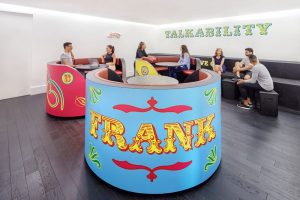A report has suggested that:
The 9-5 is dead but the office is NOT: Workplaces will not ‘return to normal’ after the coronavirus pandemic but most companies will not let employees work from home permanently.
The publication warns workplaces ‘will not return to normal’ after the pandemic is brought under control – with employees having adapted to the ‘new normal’ of working from home during the Covid-19 lockdown.
The study has advised that there has been increased stress levels among employees due to working from home since the lockdown was enforced in May 2020. It suggests workers splitting time between the office and working from home may be the way forward for many companies, even after the pandemic is over.
London-based outsourcing giant Capita have not renewed leases on 25 of their offices, while Lloyds Banking Group was reviewing its office space requirements after deciding most of its 65,000 employees have performed well working from home.
But the report says others, including social media giant Facebook, had turned against working from home models, while American mutlinational IBM had also pulled back from its staff working from home.
However the report concludes that the likely way forward for businesses will be a mixed model, with employees working from home some of the time, and in the office others.



